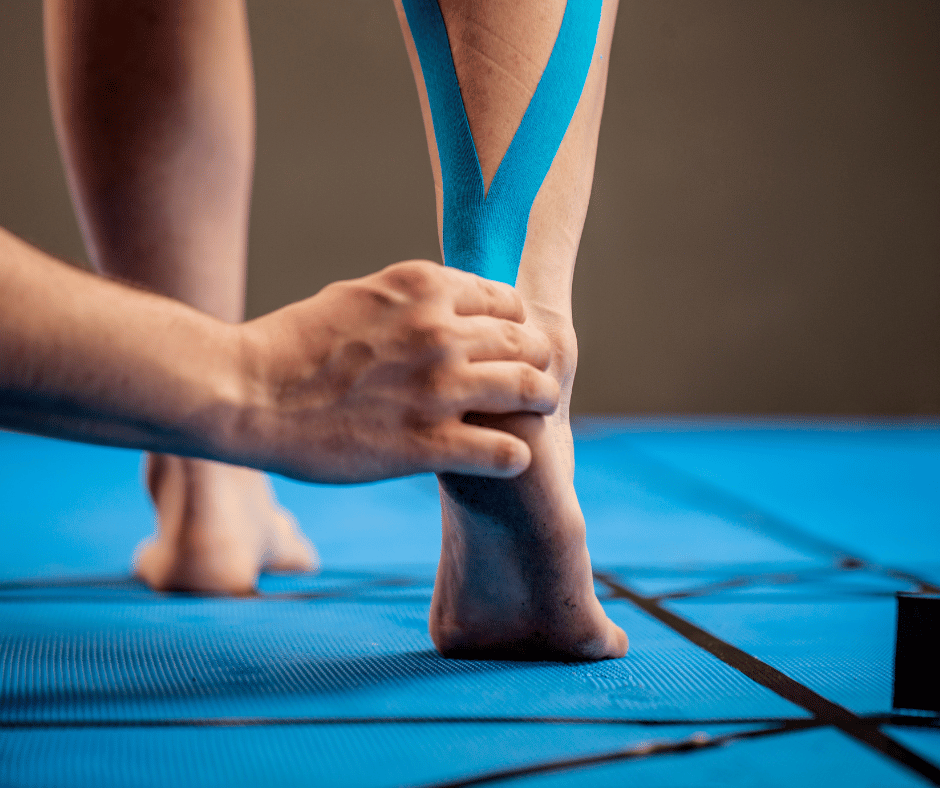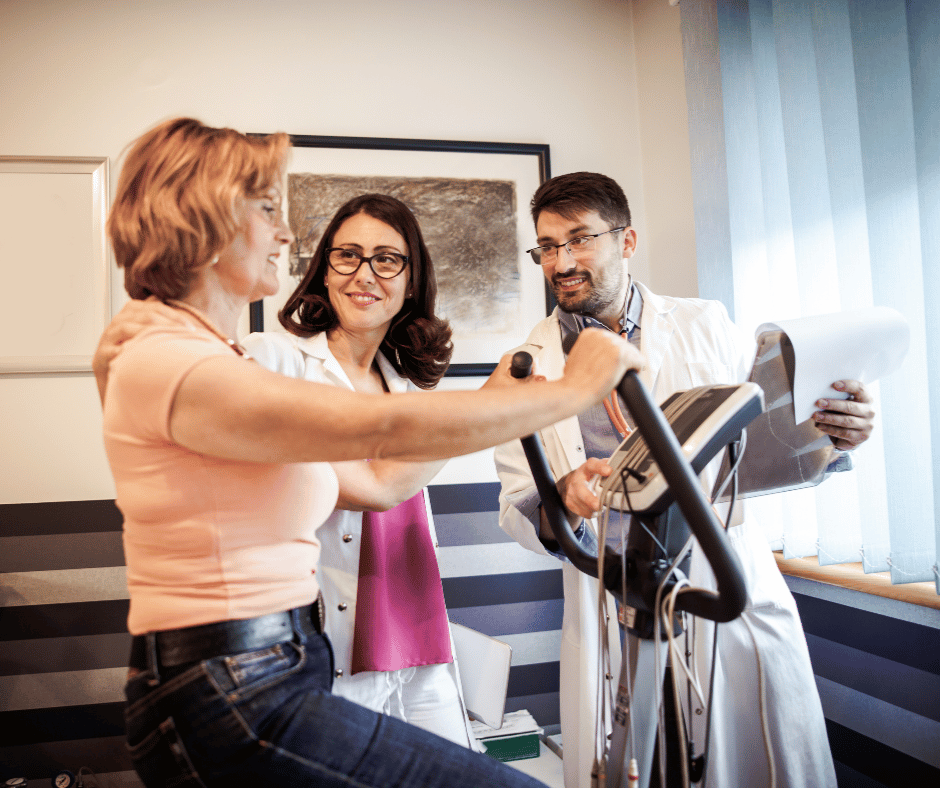Complete your bachelor’s degree to take admission in Physical Therapy School with a minimum 3.0 GPA or more. Plan carefully to meet the requirements to make a career in this sector.
Physical therapy school is a competitive field that demands strong academics, hands-on experience, and thorough preparation. Most programs use a centralized application system, but each school has its unique requirements.
This guide covers everything from physical therapy school requirements and education requirements to certifications, the application process, and the skills you must possess.
Requirements for Physical Therapy School
The requirements for admission to a physical therapy school vary from school to school, but there are some general requirements that most schools have in common. These requirements typically include:
- A bachelor’s degree from an accredited college or university.
- A minimum GPA of 3.0.
- Completion of specific pre-physical therapy courses, such as anatomy, physiology, biology, chemistry, and physics.
- A GRE score that meets the school’s minimum requirement.
- Letters of recommendation from professors or other professionals who can speak to your academic ability and potential as a physical therapist.
- A personal statement that describes your reasons for wanting to become a physical therapist and your experiences that have prepared you for this career.
- Physical therapy observation hours. Many schools require applicants to have completed a certain number of hours of observation in a physical therapy setting.
Some schools may also have additional requirements, such as a minimum number of volunteer hours or a specific GRE score. It is important to check with the individual schools to which you are applying to determine their specific requirements.

The application process for physical therapy school can be competitive, so it is important to start early and prepare thoroughly.
You should begin by researching schools that are accredited by the CAPTE (Commission on Accreditation in Physical Therapy Education). CAPTE accreditation ensures that the school meets the highest standards of education and training.
Education Requirements For Physical Therapists
Becoming a physical therapist requires completing several educational milestones. Here are the key requirements to consider:
1. Undergraduate Degree
The first step on the path to becoming a physical therapist is obtaining a bachelor’s degree. While there isn’t a specific undergraduate major required, most aspiring physical therapists pursue degrees in fields related to health sciences or biology.
It’s essential to choose a program that fulfills the prerequisite coursework needed for admission to a Doctor of Physical Therapy (DPT) program.
2. Doctor of Physical Therapy (DPT) Program
After completing a bachelor’s degree, aspiring physical therapists must enroll in a Doctor of Physical Therapy (DPT) program. DPT programs typically span three years and provide comprehensive education and training in various areas of physical therapy.
These programs include both classroom instruction with clinical experiences, enabling students to acquire the necessary skills and knowledge to practice physical therapy effectively.
3. Clinical Experience
Clinical experience is an important parameter for physical therapy education. DPT programs incorporate supervised clinical rotations, providing students with hands-on experience in different healthcare settings.
These rotations allow students to apply their classroom knowledge, develop clinical skills, and gain exposure to diverse patient populations.
4. Licensure Exam
Upon successful completion of a DPT program, graduates must pass the National Physical Therapy Examination (NPTE). The NPTE is a comprehensive licensure exam that assesses the knowledge and competency of aspiring physical therapists. Passing the exam is a requirement to obtain a license to practice physical therapy.
Admission Process For Physical Therapy School
If you are interested in pursuing a career in physical therapy, you will need to undergo a rigorous application process to gain admission into a physical therapy school.
Here are the steps and requirements you need to follow to apply for physical therapy school:
Step 1: Research Physical Therapy Programs
The first step in the admission process is to research physical therapy programs and identify the schools that offer the program you are interested in. Consider the location, cost, reputation, and program requirements when selecting schools to which you will apply.
Step 2: Complete Prerequisite Courses
Most physical therapy programs require applicants to complete certain prerequisite courses before applying.
These courses typically include anatomy, physiology, biology, chemistry, and physics. Make sure to review the prerequisites for each program you are interested in.
Step 3: Take the GRE
Many physical therapy programs require applicants to take the Graduate Record Exam (GRE) and submit their scores as part of the application process. Make sure to review the requirements for each program you are interested in.
Step 4: Gain Clinical Experience
Physical therapy schools often require applicants to have a certain amount of clinical experience before applying. This could include working as a physical therapy aide or volunteering at a physical therapy clinic.
Thoroughly review the clinical experience requirements for each program you are interested in.
Step 5: Submit Applications
Once you have completed the prerequisite courses, taken the GRE, and gained clinical experience, it is time to submit your applications.
The applicants must follow the instructions carefully and submit all required materials by the application deadline.
Step 6: Attend Interviews
After submitting your applications, you may be invited to attend interviews at the physical therapy schools you applied to. This is an opportunity for the school to get to know you better and for you to learn more about the program.
Prepare for your interviews and present yourself professionally.
Step 7: Receive Acceptance Letters
Finally, after completing all the application steps, you will receive acceptance letters from the physical therapy programs you applied to. Carefully consider your options and select the program that best suits your needs.
By following these steps, you can increase your chances of gaining admission into a physical therapy program and pursuing a rewarding career in physical therapy.
Alternative Pathways: Early Admission and PTA Considerations
Some students can take faster routes to physical therapy school through early admission programs. These special programs let qualified students start their DPT studies before finishing their undergraduate degree.
However, becoming a Physical Therapist Assistant (PTA) first is not recommended as preparation for PT school.
Early Admission Programs (3+3 Programs)
- Start DPT Early: You can begin physical therapy school after completing just 3 years of undergraduate studies instead of the full 4 years.
- Partnership Schools: Only certain universities have agreements with DPT programs to offer these early admission pathways.
- Dual Degree: Your first year of DPT courses actually counts toward completing your bachelor’s degree at your undergraduate school.
- Time Savings: You graduate with both your bachelor’s and DPT degrees in 6 years, rather than 7 years.
- Limited Spots: Very few positions are available in these programs, making them highly competitive.
- Same Standards: You still must meet all regular DPT program requirements, just earlier in your college career.
- Popular Majors: Most early admission students pursue a major in biology, kinesiology, or exercise science.
Eligibility Criteria For Early Admission
- Complete 60-75 credit hours (not more, not less).
- Maintain a minimum 3.2 overall GPA Achieve a 3.2 GPA in math and science prerequisite courses.
- Finish at least 20 semester hours of required science courses.
- Complete Texas Core Curriculum requirements before starting the DPT program.
Note that the PTA curriculum does not provide the science prerequisites needed for DPT programs. The programs are designed for a different career path, not as preparation for becoming a physical therapist.
If you want to become a PT, go directly to DPT prerequisites rather than completing PTA training first.
Physical Therapy Specializations and Certifications
Physical therapy offers various specializations and certifications that allow professionals to focus their expertise on specific areas of practice.
Some common specializations in physical therapy include:
1. Orthopedic Physical Therapy
Orthopedic physical therapists specialize in treating musculoskeletal conditions, such as fractures, joint injuries, and post-surgical rehabilitation. They use manual therapy techniques, exercise prescriptions, and other interventions to help patients regain strength, mobility, and function.

2. Pediatric Physical Therapy
Pediatric physical therapists work with children and adolescents with developmental delays, congenital conditions, or injuries. They focus on improving gross motor skills, coordination, balance, and mobility in young patients through play-based interventions.

3. Geriatric Physical Therapy
Geriatric physical therapists specialize in providing care to older adults. They address age-related conditions such as arthritis, osteoporosis, and balance issues. Geriatric physical therapy aims to enhance mobility, reduce pain, and improve overall functional abilities in the elderly population.

4. Sports Physical Therapy
Sports physical therapists work with athletes and active individuals to prevent and treat sports-related injuries. They design exercise programs, utilize sports-specific techniques, and provide rehabilitation to help athletes recover from injuries and optimize performance.

5. Neurological Physical Therapy
Neurological physical therapists treat individuals with neurological conditions, such as stroke, spinal cord injuries, and multiple sclerosis. They focus on restoring movement, improving balance, and maximizing independence in patients with neurological impairments.

6. Cardiopulmonary Physical Therapy
Cardiopulmonary physical therapists specialize in helping individuals with heart and lung conditions, such as chronic obstructive pulmonary disease (COPD) and cardiac rehabilitation. They focus on improving cardiovascular fitness, respiratory function, and overall endurance.

Continuing Education and Professional Development For Physical Therapists
To stay current in the field and enhance their skills, physical therapists must engage in continuing education and professional development opportunities. Here are some common avenues for ongoing learning:
1. Continuing Education Units (CEUs)
Continuing Education Units (CEUs) are a measure of credit that physical therapists earn by participating in approved educational programs. These programs can include workshops, seminars, conferences, online courses, and research activities. CEUs help therapists stay updated on the latest advancements in the field and maintain their licensure.
2. Advanced Certifications
Physical therapists can pursue advanced certifications in specialized areas of practice to demonstrate their expertise and enhance their professional credentials. Examples of advanced certifications include Orthopedic Certified Specialist (OCS), Sports Certified Specialist (SCS), and Geriatric Certified Specialist (GCS).
3. Specialized Courses and Workshops
Physical therapists can further expand their knowledge and skills by attending specialized courses and workshops. These opportunities provide in-depth training on specific treatment techniques, assessment methods, and emerging practice areas. They help therapists stay at the forefront of the profession and offer the best care to their patients.
State-Specific Requirements To Practice Physical Therapy
In addition to the national requirements, physical therapy licensure and practice regulations can vary by state. Aspiring physical therapists must familiarize themselves with the requirements specific to the state in which they plan to practice.
Here are some key considerations:
1. State Licensure Boards
Each state has its own physical therapy licensure board that regulates and grants licenses to practice. These boards outline the specific requirements, application processes, and renewal procedures for physical therapists within their jurisdiction. Researching and contacting the respective state board for accurate and up-to-date information is important.
2. Additional Requirements
Some states may have additional requirements beyond the national standards. These requirements can include state-specific exams, jurisprudence exams, background checks, fingerprinting, or additional documentation. Adhering to these state-specific requirements is crucial for obtaining and maintaining a license to practice physical therapy.
Skills and Qualities Required for Physical Therapy School
Apart from the educational and licensure requirements, certain skills and qualities are essential for success in the field of physical therapy. These include:
- Strong Communication Skills:
Physical therapists must effectively communicate with patients, their families, and other healthcare professionals. Clear and concise communication helps them understand patient needs, explain treatment plans, and foster collaborative relationships. - Empathy and Compassion:
Physical therapy often involves working with individuals who are in pain or experiencing limitations. Demonstrating empathy, understanding, and compassion helps build trust and create a supportive patient environment. - Physical Stamina and Strength:
Physical therapy can be physically demanding, requiring therapists to assist patients with movements, transfers, and exercises. Adequate physical stamina and strength enable therapists to perform their jobs effectively and prevent injuries. - Analytical and Problem-Solving Skills:
Physical therapists must analyze patient conditions, assess functional limitations, and develop personalized treatment plans. Strong analytical and problem-solving skills allow therapists to identify underlying issues, adapt interventions, and track progress effectively. - Flexibility and Adaptability:
Physical therapists work with diverse patient populations and encounter various treatment challenges. Being flexible and adaptable helps them adjust treatment plans, accommodate individual needs, and address unexpected situations. - Interpersonal Skills:
Building rapport and establishing positive relationships with patients is crucial in physical therapy. Effective interpersonal skills enable therapists to motivate and inspire patients, facilitate collaboration, and create a supportive therapeutic environment.
Conclusion– Score 3.0 or more GPA To Take Admission In Physical Therapy School
Prepare yourself from your undergraduate course only to take admission in Physical Therapy School for graduation. Start researching programs early and complete prerequisites with strong grades.
The application process is competitive, but thorough preparation makes a difference. Stay organized with deadlines and requirements for each program.
With the right preparation, strong academics, and genuine passion for helping others, you can successfully pass the admissions process and begin your career in physical therapy.
FAQs– Physical Therapy School Requirements
To become a physical therapist, you must complete a bachelor’s degree and a Doctor of Physical Therapy (DPT) program.
DPT programs typically take three years to complete, including both classroom instruction and clinical experiences.
While specialization is not mandatory, physical therapists can choose to specialize in areas such as orthopedics, pediatrics, geriatrics, sports, neurology, or cardiopulmonary therapy.
Physical therapists need to engage in continuing education to stay updated on advancements in the field. This may involve earning Continuing Education Units (CEUs), pursuing advanced certifications, and attending specialized courses or workshops.
Physical therapy licensure and practice requirements can vary by state. It’s important to research and comply with the state’s specific requirements in which you plan to practice.

